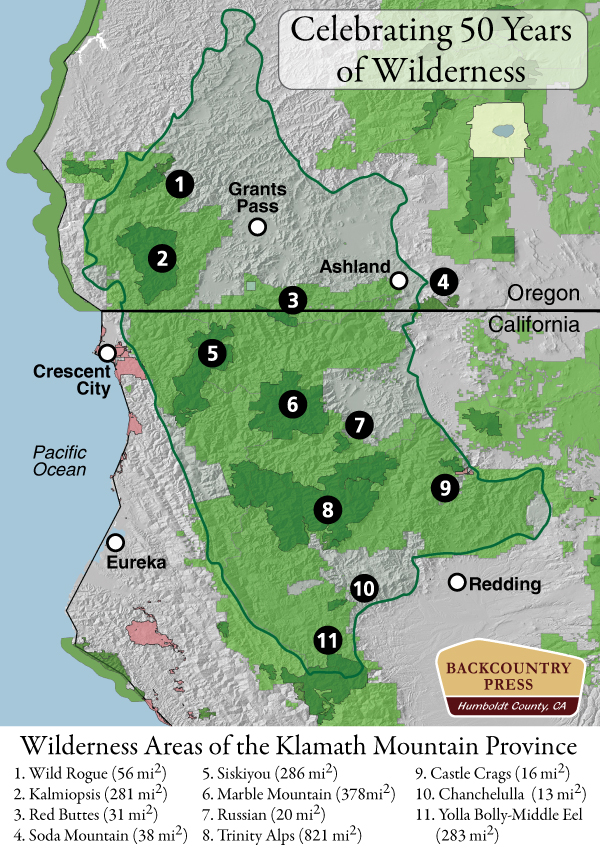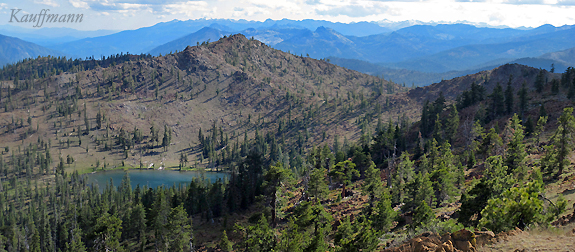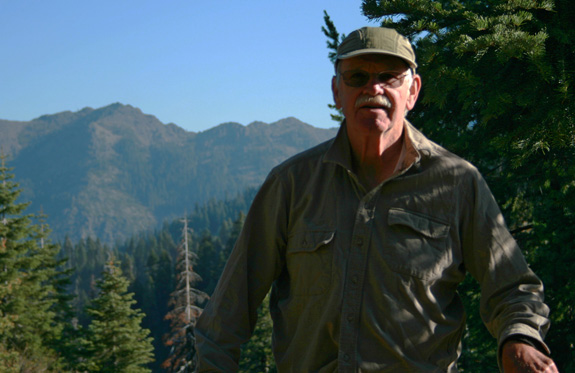Klamath Mountain Wilderness
In 1964 Congress passed The Wilderness Act in a nearly unanimous vote. Though the idea of wilderness was nothing new, its legalized preservation was. The act was meant to acknowledge and define the immediate and lasting benefits of protecting wild places—stating that land shall be set aside for “preservation and protection…so as to remain untrammeled…to retain primeval character…to only be affected by forces of nature…and to guarantee solitude…devoted to un-mechanized public purposes.” I quickly discovered these places were for me—a freedom-loving environmentalist who enjoys unconfined primeval recreation.
— Conifer Country (2012)
Since first exploring the Siskiyou Wilderness in February of 2003, I became convinced that the Klamath Mountain wilderness areas contain some of the wildest and most rugged terrain in the contiguous United States. This is country that is often so steep, and thus spatially isolated, that there are places that have rarely–if ever–been visited by humans. The Klamath Mountains also hold one of the most species-rich temperate forest in North America–with nearly 3,500 taxa documented. The diversity is due to many factors, but in essence it represents a means to appreciate the wildness that has maintained across the numerous sub-ranges in the region. The variable topography, relatively stable climate, and varied soil types have offered (and continue to do so) a refuge for plants to persist or speciate. This is a phenomenon which I am cautiously optimistic will persist into the future, even as climates rapidly change to to human activity–I also beleive this to be true do to the wilderness that is preserved that will help to promote biodiversity. September 3rd, 2014 is the 50th anniversary of the Wilderness Act – wilderness is a part of me as are these mountains.

Cory Peak Botanical and Geological Area
Original Publication DATE: 6/17/2014
There are celebrated regions of the Klamath Mountain–preserved and maintained for our enjoyment as monuments or wilderness–and there are others with little or no designation beyond National Forest land. How does the outdoor enthusiast find these little-known places? In the case of the isolated botanical areas of the Scott Mountain Crest, the main route in and out is on the Pacific Crest Trail.

John O. Sawyer – Kin to the Earth
Original Publication DATE: 9/9/2012
This story also appeared in EcoNews and Darlingtonia.
Dancing with raindrops from car to porch on any number of oft-spectacular Humboldt Bay days, I was hungry for a lunch date. As I shook my hands dry, the push of a bell initiated the shuffle of feet, a crack of the door—and soon after—a long, sincere, chuckle. The opening door revealed a smile to go with the laughter. It was the same way every time, and I always loved it. John’s spirit was contagious and he always brightened my day.

Miracle Mile
Russian Wilderness, California
Original Publication DATE: 8/31/2011
In the late 1960’s, after arriving at Humboldt State University as a new professor, John O. Sawyer received a letter in the mail from G. Ledyard Stebbins. Stebbins, widely regarded as one of America’s leading evolutionary biologists but also a lover of rare plants, suggested to John that he needed to visit a remote place in the Klamath Mountains known as Blake’s Fork. Here, he said, John might help verify a report for one of California’s rarest conifers–the Engelmann spruce. Stebbins hoped John could record his findings in a new database called the Inventory of Rare and Endangered Vascular Plants of California organized by the California Native Plant Society. With conifers calling, John and his friend and co-worker Dale Thornburgh went on a journey that would change our understanding of conifer distributions, plant associations, and wilderness in California.
